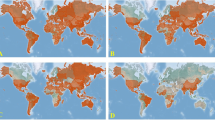Abstract
Development of commercially available host-plant resistance to Meloidogyne spp. is essential to sugarbeet (Beta vulgaris L.) root-knot nematode resistance breeding. Reactions of seedlings from resistant crosses and hybrid derivatives were evaluated against juvenile (J2) inoculations in the greenhouse. The noncultivated sea beet [B. vulgaris ssp. maritime (L.) Arcang] source of resistance is effective against the four economically important root-knot nematodes, i.e., M. incognita Races 1, 2 and 4 (Race 3 not tested), M. Javanica, M. arenaria Races 1 and 2, and M. hapla. In monoxenic culture, M. arenaria inoculations resulted in the most galling, and M. hapla, the least. Species combinations induced higher rates of infection. Different races of the same Meloidogyne species caused similar galling. Preliminary inoculation studies indicated that resistance was also effective to M. Chitwoodi and M. fallax. The trait of resistance to multiple Meloidogyne species may be valuable in developing sugarbeet, and possibly transgenic lines of other crops, resistant to root-knot nematode.
Similar content being viewed by others
References
Boerma, H.R. & R.S. Hussey, 1992. Breeding plants for resistance to nematodes. J Nematol 24: 242–252.
Brown, C.R., H. Mojtahedi, G.S. Santo & S. Austin-Phillips, 1994. Enhancing resistance to root-knot nematodes derived from wild Solanum species in potato germplasm. In: G.W. Zehnder, M.L. Powelson, R.K. Jansson & K.V. Raman (Eds), Advances in potato pest biology and management, pp. 426–438. APS Press, St. Paul, MN.
Cai, D.G., M. Kleine, S. Kifle, H.-J. Harloff, N.N. Sandal, K.A. Marcker, R.M. Klein-Lankhorst, E.M.J. Salentijn, W. Lange, W.J. Stiekema, U. Wyss, F.M.W. Grundler & C. Jung, 1997. Positional cloning of a gene for nematode resistance in sugar beet. Science 275: 832–834.
Chitwood, G.B., A.W. Specht & A.L. Havis, 1951. Reactions of peach seedlings to nematode infections. Phytopathology 41: 559.
Eisenback, J.D. & H.H. Triantaphyllou, 1991. Root-knot nematodes: Meloidogyne species and races. In: W.R. Nickle (Ed), Manual of agricultural nematology, pp. 191–274. Marcel Dekker, Inc., New York/Basel/Hong Kong.
Esbenshade, P.R. & A.C. Triantaphyllou, 1990. Isozyme phenotypes for the identification of Meloidogyne species. J Nematol 22: 10–15.
Gilbert, J.C. & D.C. McGuire, 1956. Inheritance of resistance to severe root knot from Meloidogyne incognita in commercial type tomatoes. Proc Am Soc Hort Sci 68: 437–442.
Gomez, P.L., R.L. Plaisted & B.B. Brodie, 1983. Inheritance of the resistance to Meloidogyne incognita, M. javanica, and M. arenaria in potatoes. Am Potato J 60: 339–351.
Hadisoeganda, W.W. & J.N. Sasser, 1982. Resistance of tomato, bean, southern pea, and garden pea cultivars to root-knot nematodes based on host suitability. Plant Dis 66: 145–150.
Janssen, G.J.W., 1997. Resistance to root-knot nematodes, Meloidogyne spp., in potato. PhD thesis, Wageningen Agricultural University, Wageningen, The Netherlands. 111 pp.
Karssen, G., 1996. Description of Meloidogyne fallax n. sp. (Nematoda: Heteroderidae), a root-knot nematode from The Netherlands. Fund Appl Nematol 19: 593–599.
Myers, R.F., 1990. Identification of species and races of Meloidogyne by differential host assay. In: B.M. Zuckerman, W.F. Mai & L.R. Krusberg (Eds), Plant nematology laboratory manual, rev. ed., pp. 86–90. Agric. Exp. Stn., University of Massachusetts, Amherst, MA.
Omwega, C.O., I.J. Thomason & P.A. Roberts, 1990. A single dominant gene in common bean conferring resistance to three root-knot nematode species. Phytopathology 80: 745–748.
Omwega, C.O., I.J. Thomason, P.A. Roberts & J.G. Waines, 1989. Identification of new sources of resistance to root-knot nematodes in Phaseolus. Crop Sci 29: 1463–1468.
Roberts, P.A., 1992. Current status of the availability, development, and use of host plant resistance to nematodes. J Nematol 24: 213–227.
Sasser, J.N., 1980. Root-knot nematodes: A global menace to crop production. Plant Dis 64: 36–41.
Steiner, A.A., 1968. Soilless culture. Proc. 6th Colloq. Intl Potash Inst Florence: 324–341.
Yu, M.H., 1995. Identification of a Beta maritima source of resistance to root-knot nematode for sugarbeet. Crop Sci 35: 1288–1290.
Yu, M.H., 1997. Registration of Mi-1 root-knot nematode resistant beet germplasm line. Crop Sci 37: 295.
Author information
Authors and Affiliations
Rights and permissions
About this article
Cite this article
Yu, M., Heijbroek, W. & Pakish, L. The sea beet source of resistance to multiple species of root-knot nematode. Euphytica 108, 151–155 (1999). https://doi.org/10.1023/A:1003616612201
Issue Date:
DOI: https://doi.org/10.1023/A:1003616612201




